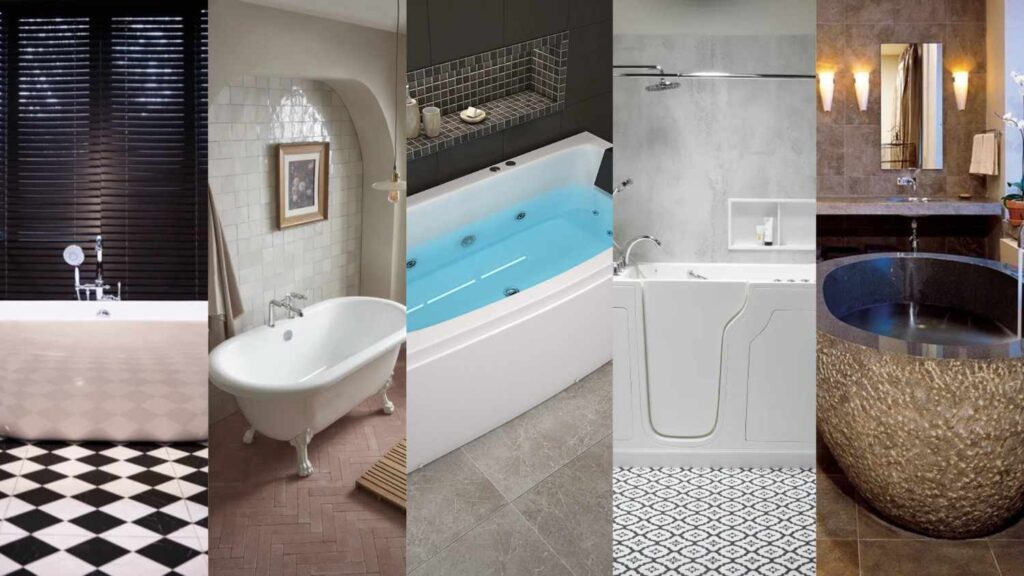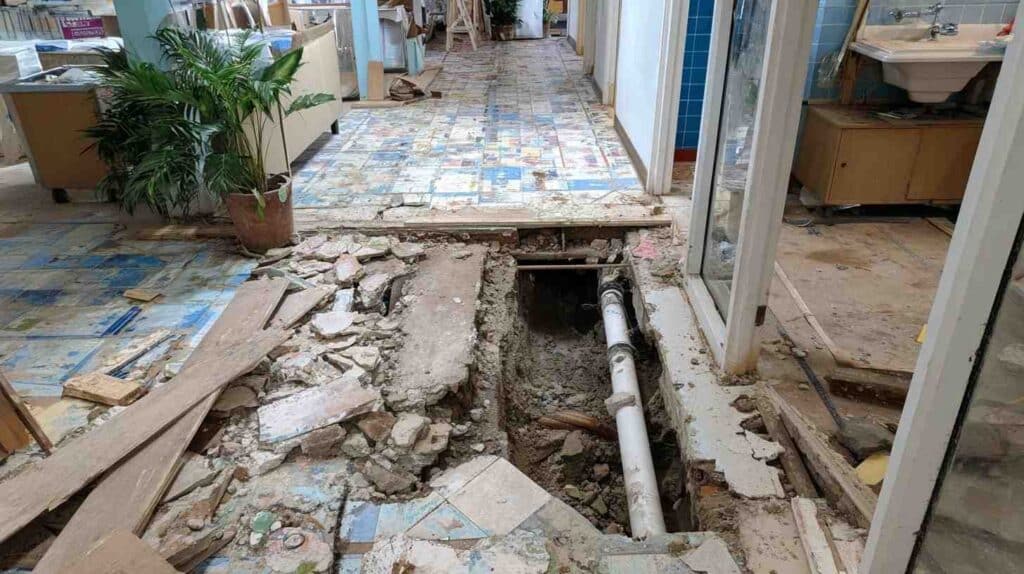Replacing or installing a bathtub isn’t just about picking the right style; it’s about knowing the costs involved. If you’ve been thinking about updating your bathroom, you may be asking what a fair bathtub installation cost looks like today.
Prices vary by location, materials, and features, and it’s easy to overlook hidden expenses. That’s where this guide comes in.
I’ll walk you through average installation and replacement costs, the factors that change the price, and how different tub types compare. You’ll also see what makes DIY risky, plus maintenance and accessibility details.
Ready to figure out what fits your budget and needs? Keep reading.
Average Bathtub Installation and Replacement Cost
The cost of installing or replacing a bathtub varies widely depending on location, tub type, and labor.
On average, a bathtub installation cost in the United States ranges between $1,400 and $10,000, with most homeowners paying around $4,000–$5,500.
So, how much does it cost to replace a bathtub? Generally, expect to spend on the lower end for standard tubs and on the higher end for luxury or walk-in models.
Factors That Influence Cost
Several factors influence the cost of bathtub installation, including materials, location, and installation complexity.
1. Tub Material and Type
The material and design of your bathtub directly shape the overall cost. Acrylic and fiberglass tubs are affordable, while cast iron, stone, and Jacuzzi models are more expensive.
Walk-in tubs cost more because of safety features and added installation requirements. Choosing between basic and luxury types significantly shifts the price.
2. Labor and Location
Labor is a major cost driver. Plumbers often charge by the hour, with rates varying widely across regions. Urban or metro areas usually mean higher prices compared to rural locations.
The experience level of the contractor also plays a role, as specialists for luxury tubs may charge more. Local demand and availability can raise or lower labor costs.
3. Features and Accessories
Extra features increase the final price. Options like hydrotherapy jets, built-in seating, digital controls, or stylish panels all add to installation expenses. These upgrades require extra plumbing or electrical work, which adds labor charges.
While accessories improve comfort and usability, each addition pushes costs higher, making it important to balance budget and desired features.
4. Installation Complexity
The complexity of the job directly impacts cost. A simple replacement of an existing tub with a similar size is more affordable and faster.
However, structural adjustments, plumbing rerouting, or upgrading to larger tubs increase both time and labor charges. The more complicated the project, the higher the price, especially if extra waterproofing or floor reinforcements are needed.
Cost by Tub Type (Side-by-Side Comparison)

Different bathtub types come with very different price ranges, influenced by design, materials, features, and overall installation needs.
| Tub Type | Average Cost Range (U.S.) |
|---|---|
| Standard Tub | $300 – $800 |
| Freestanding Tub | $1,000 – $3,500 |
| Jacuzzi/Whirlpool | $2,000 – $8,000 |
| Walk-In Tub | $3,000 – $10,000 |
| Luxury Stone Tub | $5,000 – $15,000+ |
- Standard Tub: Most affordable option, easy to install, and widely available. Best for budget-focused homeowners and small bathroom renovations.
- Freestanding Tub: Stylish and modern, these tubs cost more due to size and installation needs. Popular in luxury and contemporary bathrooms.
- Jacuzzi or Whirlpool Tub: Comes with hydrotherapy jets and advanced controls. Higher cost reflects both the tub price and additional plumbing/electrical requirements.
- Walk-In Tub: Designed for accessibility, with doors and built-in seating. Expensive due to safety features and special installation needs.
- Luxury Stone Tub: High-end option made of stone or marble. Offers durability and aesthetics but requires strong flooring and costly professional installation.
DIY vs Professional Installation
When planning a bathtub installation, it helps to see the main differences side by side. The table below highlights cost, time, risks, and best use cases for both options.
| Factor | DIY Installation | Professional Installation |
|---|---|---|
| Upfront Cost | Lower – covers tools, materials, disposal fees | Higher – labor charges added to materials |
| Skill Needed | High – requires plumbing and carpentry skills | Low – handled by trained installers |
| Time Investment | Significant – may take several days | Faster – usually completed in a day or two |
| Risk of Mistakes | High – leaks, damage, costly future repairs | Low – backed by warranties and expertise |
| Best For | Simple bathtub swaps without major changes | Complex installs with plumbing/electrical work |
| Peace of Mind | Limited – success depends on your ability | Strong – guarantees proper, safe installation |
This quick comparison makes it clear: DIY can work for basic replacements, but for complex projects, professional installation is the safer route.
Hidden and Unexpected Costs Related to Bathtubs

Beyond the price of the tub and labor, several hidden costs can raise your total bill. Removing an old bathtub and handling debris disposal often adds extra charges.
Waterproofing and repairing wall finishes may be necessary, especially in older bathrooms. In places like the U.S. or U.K., you may also need permits or code inspections, which increase expenses further.
Finally, additional plumbing or electrical adjustments, such as rerouting pipes or adding outlets for whirlpool features, can drive costs higher. These expenses are easy to overlook but important to budget for before starting your bathtub installation project.
Time Frame for Installation or Replacement of Bathtubs
The time needed for bathtub installation or replacement depends on the project’s complexity.
A straightforward swap, where the new tub matches the old one in size and design, usually takes 2–4 hours. This includes removal, positioning, and plumbing connections.
However, timelines extend significantly if remodeling is required or when installing specialized tubs like walk-in or Jacuzzi models. In those cases, additional plumbing, waterproofing, or electrical work may stretch the process to one or even two full days.
Planning ahead helps manage expectations and minimize disruptions.
Maintenance and Long-Term Costs of Bathtubs
Taking care of your bathtub is just as important as installation since ongoing maintenance affects durability, comfort, and future expenses.
- Cleaning and Upkeep: Acrylic tubs are easy to clean, while stone or marble require special products and more care.
- Repair or Replacement Parts: Jets, panels, or digital systems in luxury tubs often need servicing, adding to long-term costs.
- Water and Energy Usage: Whirlpool and heated tubs use more water and electricity, impacting monthly utility bills.
- Lifespan by Material: Acrylic lasts 10–15 years, while cast iron or stone can exceed 30 years with proper care.
Conclusion
By now, you know the real numbers behind bathtub installation cost, from average price ranges to hidden fees that surprise many homeowners.
The key takeaway is that costs depend on materials, labor, features, and how complex the project becomes.
If you’re weighing DIY against hiring a pro, remember that expert help often saves money in the long run by avoiding mistakes.
Think about your budget, the type of tub you want, and the long-term care it requires. With the right planning, you can choose a tub that brings comfort without overspending.
If you found this breakdown useful, check out my other bathroom cost and design guides to plan your next project.














